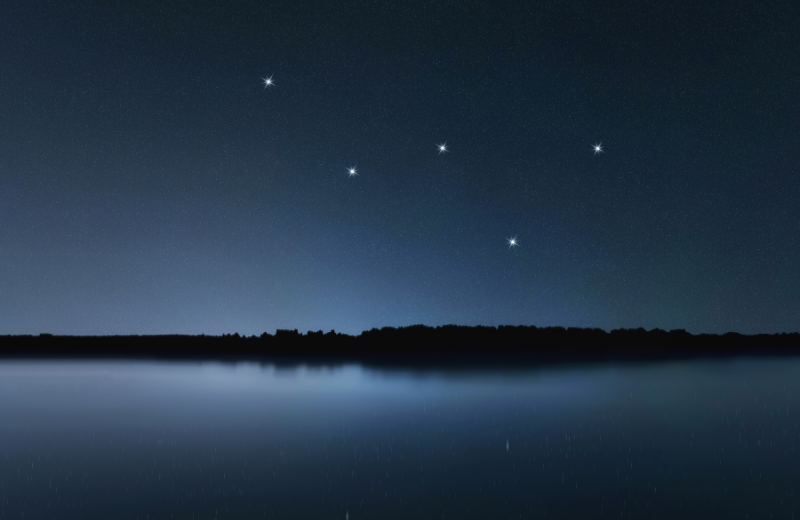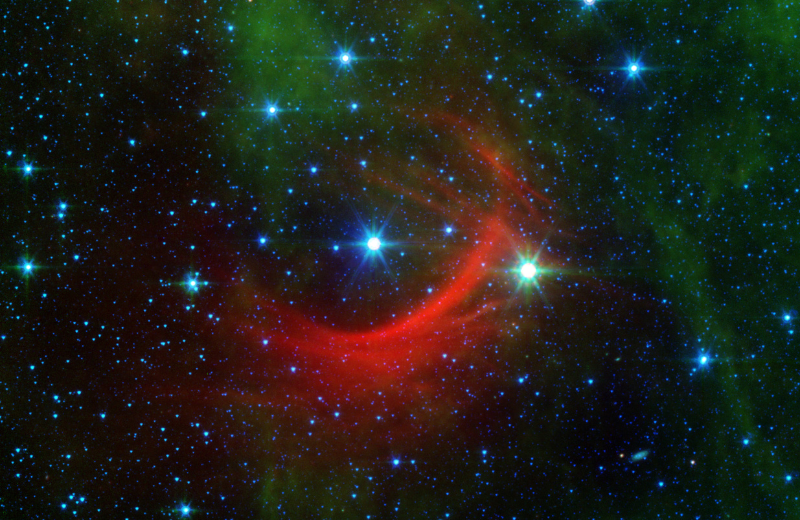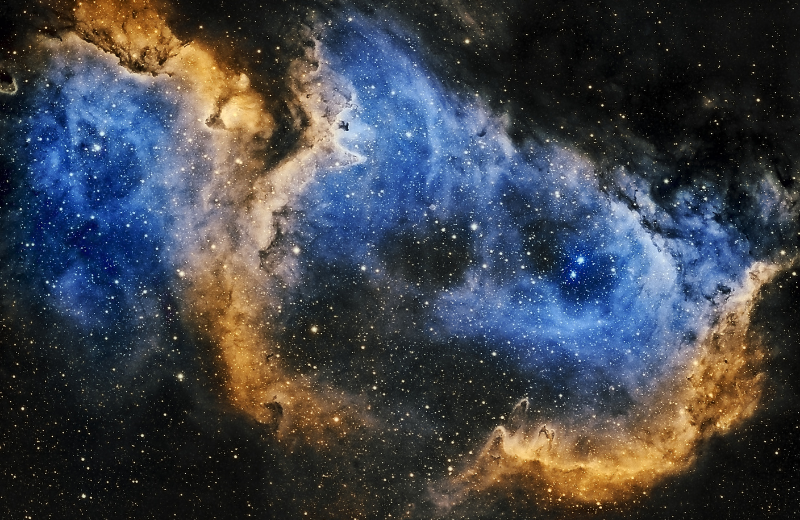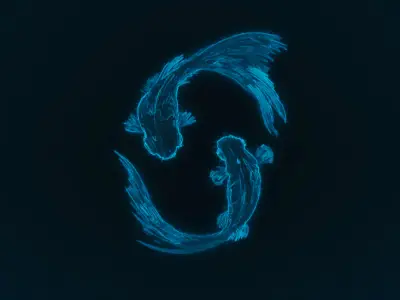If you’ve ever looked up at the night sky and noticed a distinct 'W' shape twinkling among the stars, then you’ve spotted Cassiopeia. This famous constellation has fascinated stargazers for its bright and recognisable pattern and rich mythology and history. In this guide, you’ll learn everything you need to know about the constellation Cassiopeia, from its ancient story to how you can find it in the sky.
Jump to:
- What is the Cassiopeia Constellation?
- What Does Cassiopeia Look Like?
- The Cassiopeia Constellation Myth
- What is the Meaning of the Cassiopeia Constellation?
- How to Pronounce Cassiopeia
- Cassiopeia’s Stars
- Nebulae in the Cassiopeia Constellation
- Finding Cassiopeia in the Sky
- Fun Facts About Cassiopeia
- Study Astronomy for £29
Recommended for you!
Best SellersWhat is the Cassiopeia Constellation?
Cassiopeia is one of the most recognisable constellations in the northern sky. Shaped like a 'W' or 'M' depending on its orientation, it consists of five bright stars that make it easy to spot even for novice stargazers. The constellation is named after Queen Cassiopeia from Greek mythology, a vain queen who boasted about her beauty. Located near the North Star, Polaris, Cassiopeia can be seen throughout the year in many parts of the world, including the UK.
What Does Cassiopeia Look Like?

The constellation Cassiopeia is easily recognised by its distinctive 'W' shape, formed by five major stars. These stars are commonly known as Schedar, Caph, Gamma Cassiopeiae, Ruchbah, and Segin. The shape it forms is what makes Cassiopeia stand out, as it resembles either a 'W' or 'M' depending on how it’s positioned in the sky at different times of the night or year.
The Cassiopeia Constellation Myth
The mythology surrounding Cassiopeia is as interesting as the constellation itself. According to Greek myth, Queen Cassiopeia was known for her unmatched beauty, but her vanity was her downfall. She boasted that both she and her daughter Andromeda were more beautiful than the Nereids, sea nymphs who were favourites of the god Poseidon.
Angered by this insult, Poseidon punished Cassiopeia by placing her in the sky, where she spends half of the year upside down as a reminder of her arrogance.
What is the Meaning of the Cassiopeia Constellation?
In Greek mythology, the story of Cassiopeia is a cautionary tale about pride and vanity. The constellation serves as a symbol of her punishment, as she was placed in the sky for all to see.
Even though Cassiopeia’s story is rooted in Greek myth, the constellation has been a significant part of various cultures’ stargazing traditions, symbolising different aspects depending on the time and place.
How to Pronounce Cassiopeia
Cassiopeia is typically pronounced as "Kass-ee-oh-PEE-uh," though some also say "Kass-ee-OH-pee-uh." Either pronunciation is widely accepted, so you can choose whichever feels most natural.
Cassiopeia’s Stars

The five major stars that makeup Cassiopeia’s distinct shape are all unique in their own right. Here’s a quick overview of each:
- Schedar: The brightest star in the constellation, Schedar marks the tip of the 'W.'
- Caph: This star forms one end of the 'W' and is the second brightest star in Cassiopeia.
- Gamma Cassiopeiae: Situated at the centre of the 'W,' this star is variable in brightness, meaning it can appear brighter or dimmer over time.
- Ruchbah: Also known as Delta Cassiopeiae, Ruchbah marks one of the outer points of the 'W.'
- Segin: The fifth and final star in Cassiopeia’s main structure, marking the other tip of the 'W.'
These stars, along with a few fainter ones, make Cassiopeia easily identifiable in the night sky.
Nebulae in the Cassiopeia Constellation

Cassiopeia is home to several nebulae, which are vast clouds of gas and dust in space. The most famous of these is the Heart and Soul Nebulae, located near the outer edge of the Milky Way.
These nebulae are of great interest to astronomers because they are areas where new stars are being born. While not visible to the naked eye, you can observe these nebulae with the help of a telescope.
Finding Cassiopeia in the Sky
One of the reasons Cassiopeia is so special is that it’s a circumpolar constellation, meaning it never sets below the horizon in the northern hemisphere. This makes it visible year-round for much of the world, including the UK.
To find Cassiopeia, look for the characteristic 'W' shape. It’s located opposite the Big Dipper, with Polaris (the North Star) sitting between them. During autumn and winter months, Cassiopeia is particularly easy to spot as it rises higher in the sky.
Recommended for you!
Best SellersFun Facts About Cassiopeia
Cassiopeia holds a fascinating place in both mythology and astronomy. Here are a few interesting facts about this 'W'-shaped constellation:
- Cassiopeia is always visible: Thanks to its proximity to the North Star, Cassiopeia can be seen all year long in the northern hemisphere.
- It’s not the Little Dipper: While its 'W' shape may look like the Little Dipper to some, Cassiopeia is a separate constellation altogether.
- Cassiopeia and the Milky Way: If you’re looking for the Milky Way, Cassiopeia can act as a guide. The constellation lies along the plane of the Milky Way, making it a useful marker when stargazing.
- Cassiopeia's daughter: In mythology, Cassiopeia’s daughter, Andromeda, also has a constellation named after her, making for a celestial family reunion in the night sky.
Study Astronomy for £29
If this journey through the stars has sparked your curiosity about the universe, why not take it further with an Astronomy Diploma Course from Centre of Excellence? Whether you’re new to stargazing or an experienced astronomer, this course offers in-depth knowledge of the constellations, planets, and the wider cosmos. For a limited time, you can enrol for just £29, giving you a perfect opportunity to explore the night sky in more detail.













